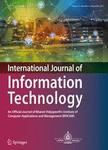版权所有:内蒙古大学图书馆 技术提供:维普资讯• 智图
内蒙古自治区呼和浩特市赛罕区大学西街235号 邮编: 010021

作者机构:Department of Mathematics Computer Science and Statistics Benue State University Makurdi Nigeria
出 版 物:《International Journal of Information Technology (Singapore)》 (Int. J. Inf. Technol.)
年 卷 期:2022年第14卷第7期
页 面:3629-3635页
主 题:Bag of Words Hate speech Machine learning algorithm Sentiment analysis Social media TF-IDF Twitter
摘 要:Social media platforms such as Twitter have revolutionized online communication and interactions but often contain components of disdain for its growing user base. This discomforting feed creates instability leading to mental breakdown, and loss of human lives and properties among other results of misuse. Even though the problem posed by the content of social media is obvious, the challenge of detecting hateful content persists. Several algorithms and techniques have been used in the past for detecting hateful content on social media but there is room for improvement. The goal of this paper is to detect hate speech from live tweets on Twitter via a combination of mechanisms. The comparison results of Term Frequency-Inverse Document Frequency (TF-IDF) and Bag of Words (BoW) with machine learning models of Logistic Regression, Naïve Bayes, Decision Tree, and K-Nearest Neighbour (KNN), is used to select the best performing model. This model which is integrated into a web system developed with Twitter Application Programming Interface (API) is used in identifying live tweets which are hateful or not. The outcome of the comparative study presented showed that Decision Tree performed better than the other three models with an accuracy of 92.43% using TF-IDF which gives optimal results compared to BoW. © 2022, The Author(s), under exclusive licence to Bharati Vidyapeeth s Institute of Computer Applications and Management.